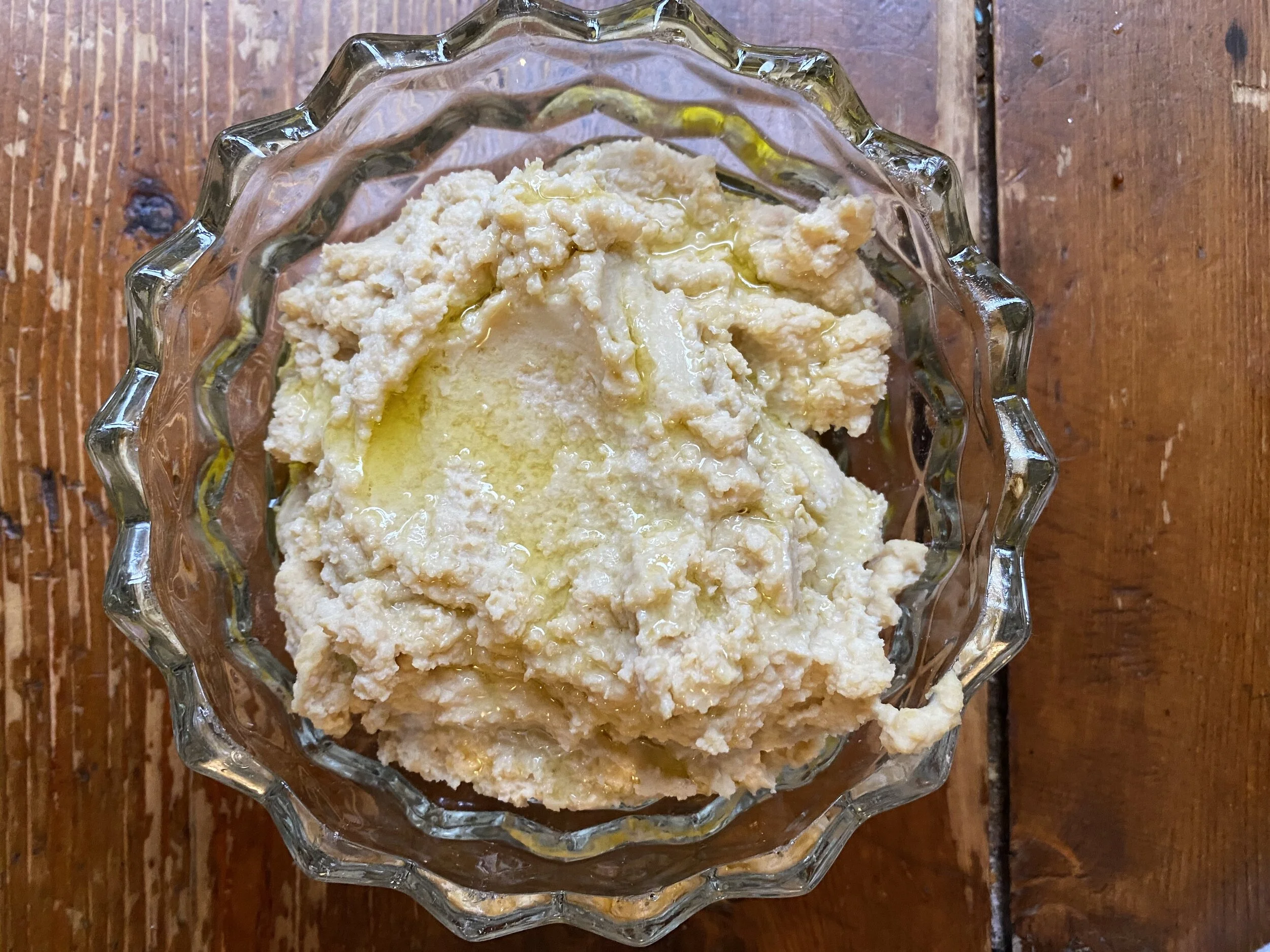The first time I tasted homemade hummus, it was made by a utilitarian soul who prioritized function over flavor and rejected ingredient measurements. The result did not tempt me to take a second bite, let alone to make my own. I decided that homemade hummus was not for me. But as years passed, I noticed that some restaurants were serving a hummus that tasted far more delicious than anything I could purchase in a supermarket. I realized that hummus was worth making, but I felt overwhelmed at the prospect of finding the right recipe. Occasionally I tried, but my results did not measure up to those of the restaurants that I most liked.
Six years ago, Sam took up cooking. He found particular inspiration in Middle Eastern food, and started making his own hummus. Soon his hummus was really good, but it wasn’t quite what I wanted in hummus. Surreptitious recipe testing ensued. Then, one day, I got it right. My perfect balance of ingredients. Now, I make a hummus so delicious that when we have some in the fridge, I lie in bed thinking about it, wishing it were time to eat. Sam, my life’s great love, whispers to people in corners about it: “it’s good, but it needs lemon zest.” “I prefer mine with olive oil,” he says. But most of our friends don’t hear him. They’re too busy crowding around the hummus bowl.
HUMMUS
3 1/2 cups cooked, drained chickpeas (from 2 15-ounce cans) or cooked in the slow cooker with
1 tablespoon salt on high for 3 or 4 hours
1/3 cup tahini paste
Juice of 1 lemon
3-4 small cloves garlic, roughly chopped
1 1/2 teaspoons table salt
Approximately 1/2 cup water or chickpea cooking water (don’t use the water from the can if using canned)
If you’d like to start with dried chickpeas (an economical and flavorsome choice), the process begins the night before. Empty a 1-pound bag of chickpeas into a cold slow cooker, rinse them, then fill the slow cooker insert close to the top with water. Leave overnight (the slow cooker is turned off; the peas are soaking, not cooking). In the morning, drain the water and refill with fresh, so the fresh water covers the peas by two inches. Add 1 tablespoon salt and cook on high for 4 hours or on low for 8.
Use a slotted spoon to move half of the chickpeas to a food processor. Freeze the remaining half for the next time you want to make hummus—or some other lovely chickpea dish.
Alternatively, you could skip the slow cooker and simply open, rinse, and drain 2 15-ounce cans of chickpeas.
Pulse the chickpeas in the food processor for 1 minute. Add tahini, salt, lemon juice, and garlic, and pulse again several times until the mixture looks smooth and uniform. Then turn the processor on and add the chickpea water; blend until smooth. Turn off the machine and taste for seasoning, adding a little more salt or lemon if necessary. If you’d like, drizzle with a little olive oil when the hummus sits nestled in its serving dish.


